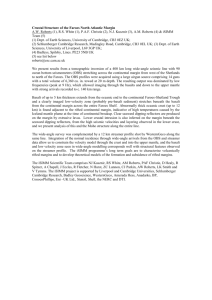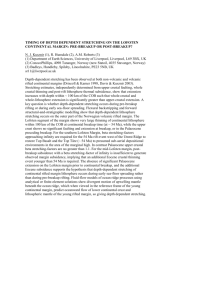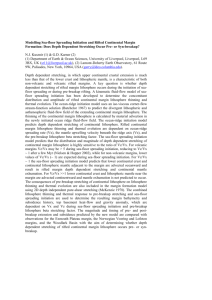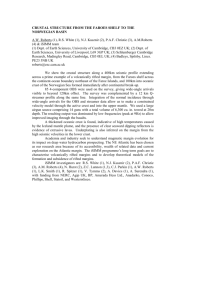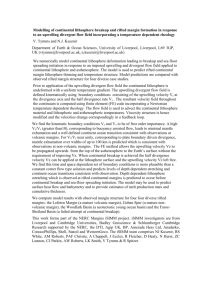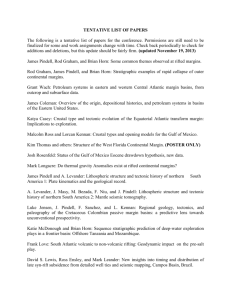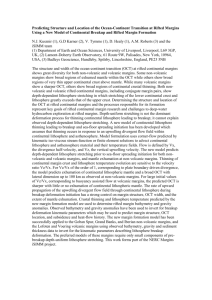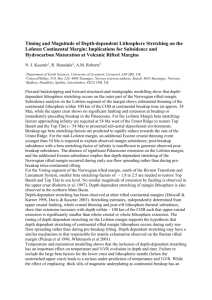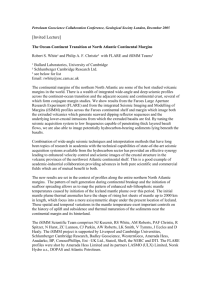PGC-Abstract_VTymms
advertisement
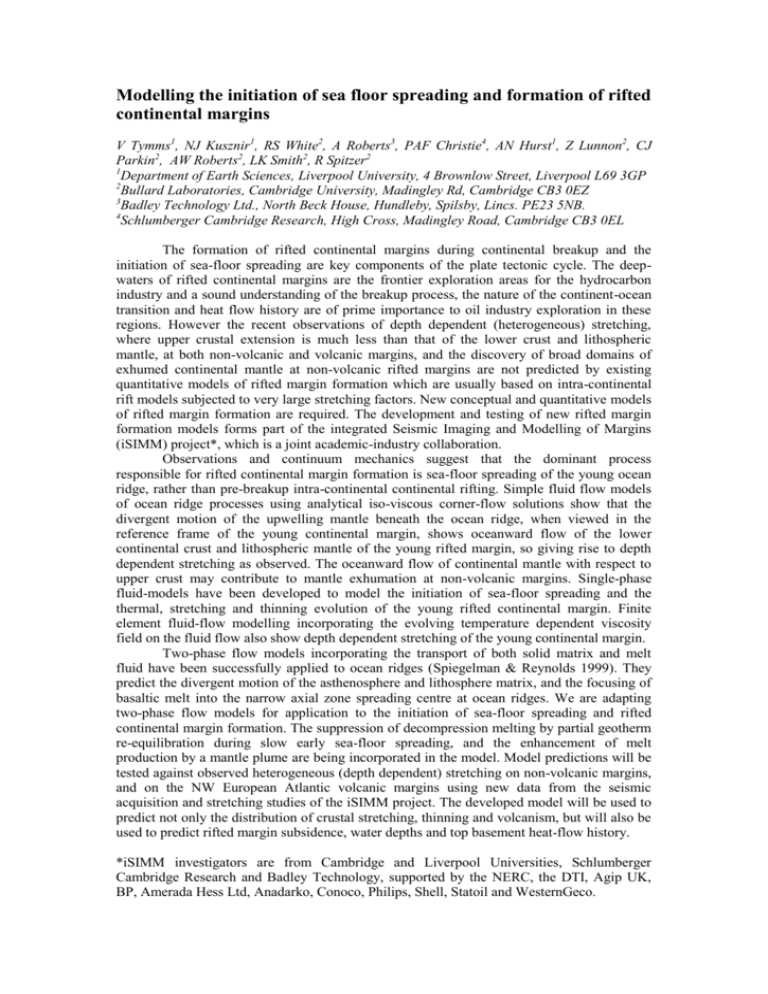
Modelling the initiation of sea floor spreading and formation of rifted continental margins V Tymms1, NJ Kusznir1, RS White2, A Roberts3, PAF Christie4, AN Hurst1, Z Lunnon2, CJ Parkin2, AW Roberts2, LK Smith2, R Spitzer2 1 Department of Earth Sciences, Liverpool University, 4 Brownlow Street, Liverpool L69 3GP 2 Bullard Laboratories, Cambridge University, Madingley Rd, Cambridge CB3 0EZ 3 Badley Technology Ltd., North Beck House, Hundleby, Spilsby, Lincs. PE23 5NB. 4 Schlumberger Cambridge Research, High Cross, Madingley Road, Cambridge CB3 0EL The formation of rifted continental margins during continental breakup and the initiation of sea-floor spreading are key components of the plate tectonic cycle. The deepwaters of rifted continental margins are the frontier exploration areas for the hydrocarbon industry and a sound understanding of the breakup process, the nature of the continent-ocean transition and heat flow history are of prime importance to oil industry exploration in these regions. However the recent observations of depth dependent (heterogeneous) stretching, where upper crustal extension is much less than that of the lower crust and lithospheric mantle, at both non-volcanic and volcanic margins, and the discovery of broad domains of exhumed continental mantle at non-volcanic rifted margins are not predicted by existing quantitative models of rifted margin formation which are usually based on intra-continental rift models subjected to very large stretching factors. New conceptual and quantitative models of rifted margin formation are required. The development and testing of new rifted margin formation models forms part of the integrated Seismic Imaging and Modelling of Margins (iSIMM) project*, which is a joint academic-industry collaboration. Observations and continuum mechanics suggest that the dominant process responsible for rifted continental margin formation is sea-floor spreading of the young ocean ridge, rather than pre-breakup intra-continental continental rifting. Simple fluid flow models of ocean ridge processes using analytical iso-viscous corner-flow solutions show that the divergent motion of the upwelling mantle beneath the ocean ridge, when viewed in the reference frame of the young continental margin, shows oceanward flow of the lower continental crust and lithospheric mantle of the young rifted margin, so giving rise to depth dependent stretching as observed. The oceanward flow of continental mantle with respect to upper crust may contribute to mantle exhumation at non-volcanic margins. Single-phase fluid-models have been developed to model the initiation of sea-floor spreading and the thermal, stretching and thinning evolution of the young rifted continental margin. Finite element fluid-flow modelling incorporating the evolving temperature dependent viscosity field on the fluid flow also show depth dependent stretching of the young continental margin. Two-phase flow models incorporating the transport of both solid matrix and melt fluid have been successfully applied to ocean ridges (Spiegelman & Reynolds 1999). They predict the divergent motion of the asthenosphere and lithosphere matrix, and the focusing of basaltic melt into the narrow axial zone spreading centre at ocean ridges. We are adapting two-phase flow models for application to the initiation of sea-floor spreading and rifted continental margin formation. The suppression of decompression melting by partial geotherm re-equilibration during slow early sea-floor spreading, and the enhancement of melt production by a mantle plume are being incorporated in the model. Model predictions will be tested against observed heterogeneous (depth dependent) stretching on non-volcanic margins, and on the NW European Atlantic volcanic margins using new data from the seismic acquisition and stretching studies of the iSIMM project. The developed model will be used to predict not only the distribution of crustal stretching, thinning and volcanism, but will also be used to predict rifted margin subsidence, water depths and top basement heat-flow history. *iSIMM investigators are from Cambridge and Liverpool Universities, Schlumberger Cambridge Research and Badley Technology, supported by the NERC, the DTI, Agip UK, BP, Amerada Hess Ltd, Anadarko, Conoco, Philips, Shell, Statoil and WesternGeco.
